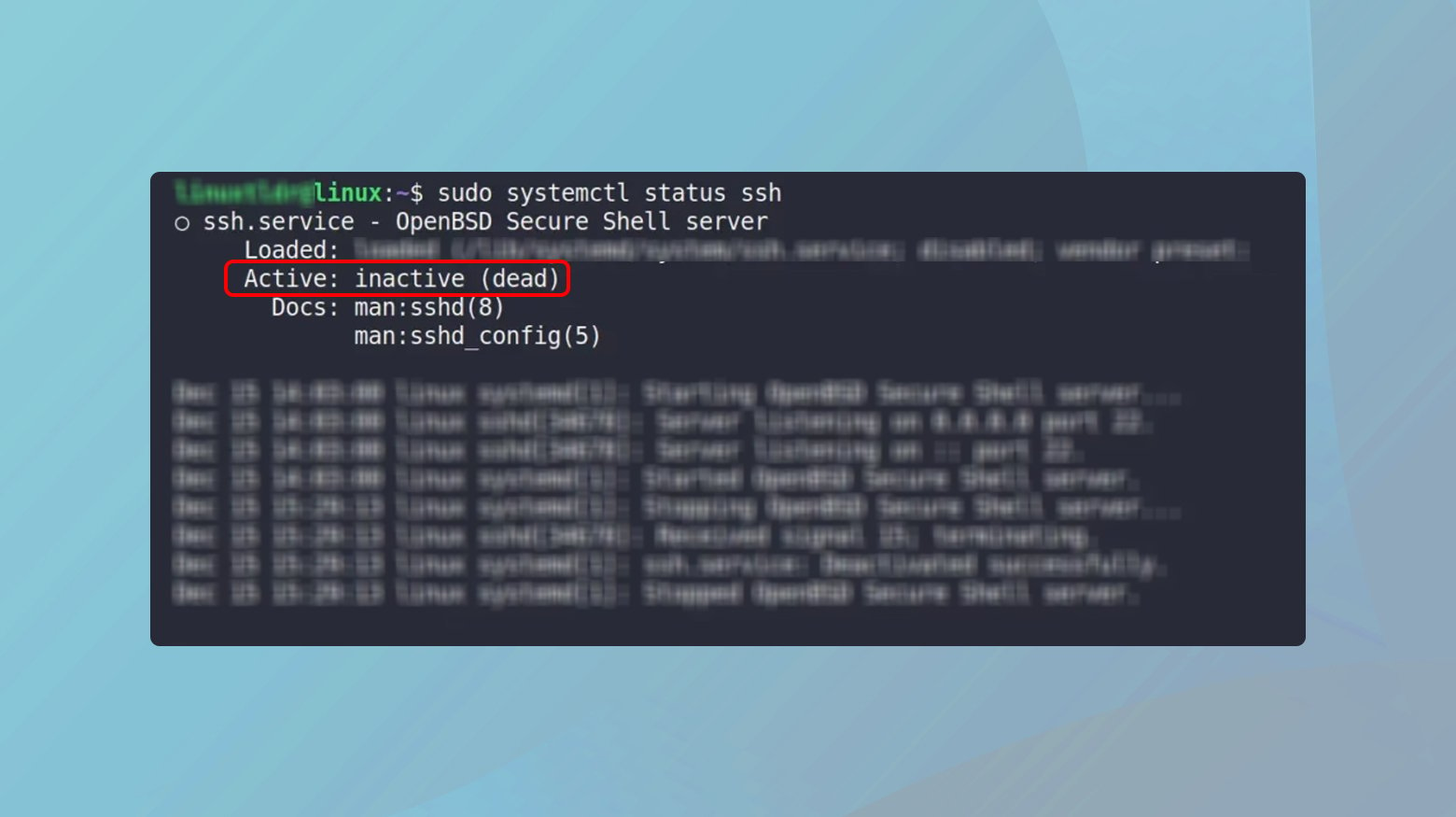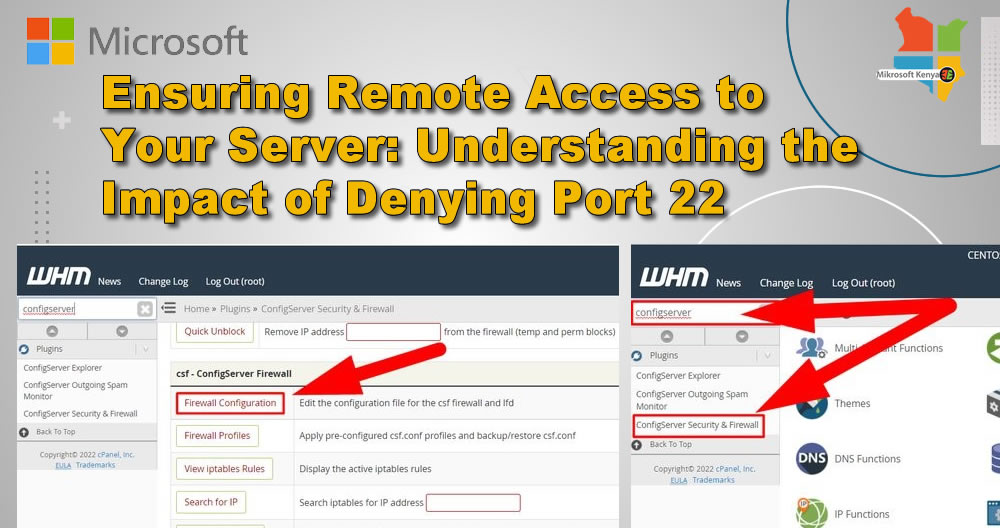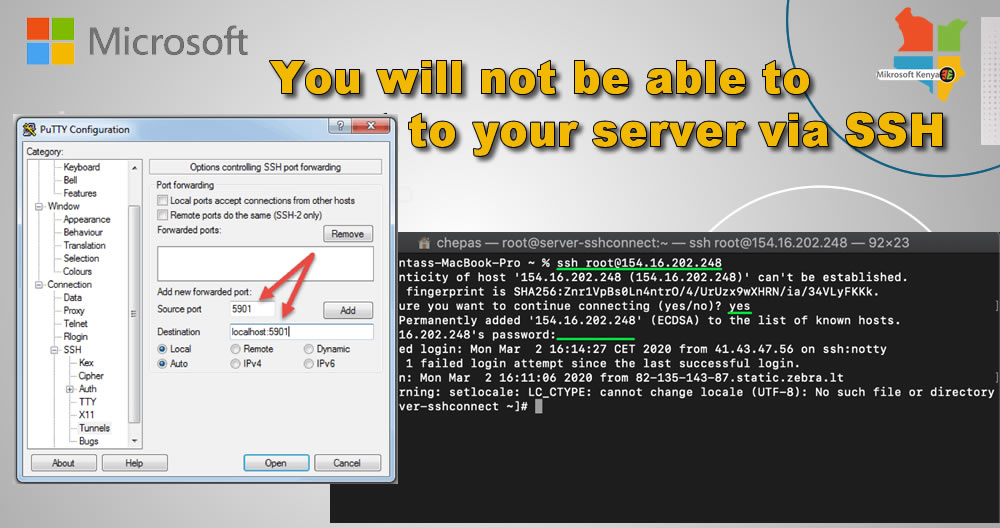
In the realm of server administration and remote access, SSH (Secure Shell) serves as a cornerstone for secure communication and management. It allows administrators to remotely access and configure servers securely over an encrypted channel. However, a crucial aspect of SSH is its reliance on port 22 as the default listening port. Understanding the implications of denying access to this port is paramount for maintaining uninterrupted server connectivity.
Why Port 22 Matters
SSH uses port 22 by default to accept incoming connections. This port acts as the gateway for administrators to establish secure shell sessions with their servers. It facilitates tasks ranging from routine maintenance to critical system configurations.

The Consequences of Denying Port 22
When access to port 22 is denied, several critical issues arise:
- Loss of SSH Connectivity: Denying port 22 effectively severs the SSH connection between administrators and their servers. This loss of connectivity restricts the ability to perform essential tasks remotely.
- Impact on Remote Administration: SSH is a primary method for remote administration due to its security features and versatility. Without access to port 22, administrators cannot execute commands, transfer files securely, or manage server configurations remotely.
- Recovery Challenges: Recovering from a denied port 22 scenario poses significant challenges. Since SSH is typically the primary remote access method, losing it complicates troubleshooting, updates, and critical fixes that require remote intervention.
Mitigating the Risks
To mitigate the risks associated with denying port 22, consider the following strategies:
- Alternative SSH Ports: Configure SSH to listen on a non-standard port (other than 22). While this approach can enhance security by obfuscating the port, it requires careful configuration to prevent inadvertently locking oneself out.
- Web-Based Console Access: Many hosting providers offer web-based console access. This feature allows administrators to interact with the server’s console directly through a web interface, circumventing the need for SSH access.
- Physical Access Options: For physical servers, ensuring access via terminal or KVM (Keyboard, Video, Mouse) switch provides a fallback method in emergencies when remote access methods fail.
Best Practices for Firewall Management
Effective management of firewall rules is crucial to prevent accidental lockouts. Adopt these best practices:
- Rule Documentation: Maintain clear documentation of firewall rules, including those pertaining to SSH access.
- Testing Changes: Before implementing firewall changes, test them in a controlled environment to verify functionality and mitigate risks.
- Emergency Contacts: Establish emergency contacts or procedures for accessing technical support in case of severe access issues.
Denying access to port 22 effectively cuts off SSH connectivity, highlighting the importance of proactive server management and contingency planning. By understanding the implications of port 22 denial and implementing robust access strategies, administrators can safeguard continuous access to critical servers. Balancing security with accessibility ensures that remote administration remains efficient and resilient in diverse operational scenarios.

In conclusion, while denying port 22 may enhance security measures, careful planning and alternative access methods are essential to mitigate the risks associated with potential SSH access issues.
While denying port 22 can enhance security by reducing exposure to automated attacks targeting default ports, it’s essential to implement additional security measures:
- Strong Authentication: Utilize strong authentication methods such as SSH keys rather than relying solely on passwords.
- IP Whitelisting: Restrict SSH access to specific IP addresses or ranges to reduce exposure to unauthorized access attempts.
- Monitoring and Alerts: Implement monitoring tools to detect unusual SSH connection attempts or anomalies in server access patterns. Configure alerts to notify administrators of potential security breaches.
Planning for Contingencies
Preparedness is key to mitigating the impact of denied port 22 scenarios:
- Backup Configuration: Maintain backup configurations of firewall rules and SSH settings to facilitate rapid recovery in case of misconfiguration or accidental denial.
- Emergency Access Procedures: Establish emergency access procedures and ensure key personnel are aware of how to access servers through alternative methods during SSH access disruptions.
Continuous Improvement
Regularly review and update your server access strategies:
- Periodic Audits: Conduct periodic audits of firewall rules and access policies to ensure they align with current security best practices and operational requirements.
- Training and Awareness: Provide training to staff on secure access practices and contingency procedures to enhance readiness for handling access disruptions effectively.
In today’s digital landscape, where remote access to servers is indispensable for business operations, understanding the implications of denying port 22 is critical. While enhancing security by limiting access to default ports like 22 is prudent, it necessitates thoughtful planning and implementation of alternative access methods and security measures. By adopting a proactive approach to server management, including robust firewall configuration, contingency planning, and continuous improvement of access strategies, organizations can ensure resilient and secure remote administration.
In summary, while denying port 22 may enhance security measures, careful planning and alternative access methods are essential to mitigate the risks associated with potential SSH access issues. By balancing security with accessibility, organizations can maintain uninterrupted server connectivity and operational efficiency, even in challenging circumstances.




